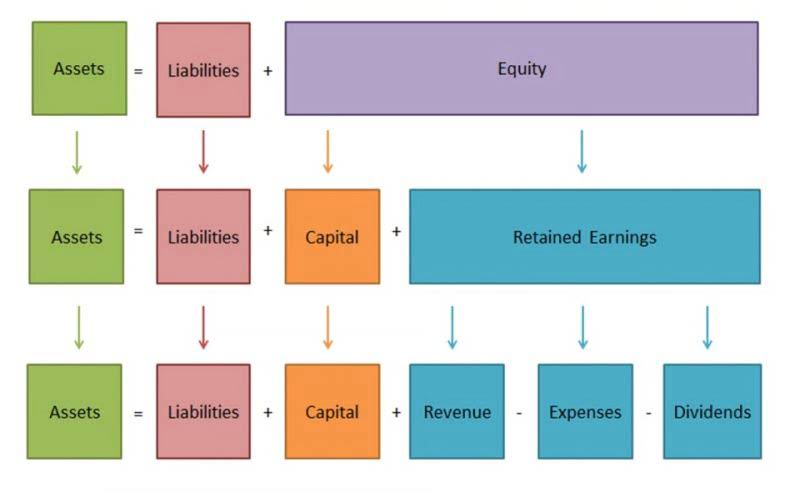Treatment of Prepaid Expenses in Final Accounts

The payment of the insurance expense is made now for services that will be received later or in another accounting period. The initial entry will be a payment entered as a debit of $12,000 to prepaid insurance and a credit of $12,000 to cash. At the end of January, one month of coverage or a portion of an insurance premium will be used up so there must be an adjustment made to the prepaid insurance account. One month of insurance is equivalent to a $1,000 (12,000 divided by 12 months) premium. On January 31st, you would debit insurance expense in the amount of $1,000 and credit $1,000 to the prepaid insurance expense account. This adjusting entry is recorded at the end of each month through December 31st which at that time all coverage will have been used up and the prepaid insurance balance should be zero.
Accounting Principles Behind Prepaid Insurance

By the end of the month you used up some of these supplies, so you reduced the value of this asset to reflect what you actually had on hand at the end of the month ($900). What was used up ($100) became an expense, or cost of doing business, for the month. To transfer what was used, Supplies Expense was debited for the amount used and Supplies was credited to reduce the asset by the same amount. Any remaining balance in the Supplies account is what you have left to use in the future; it continues to be an asset since it is still available. People who run businesses or hold management positions might find prepaid insurance plans ideal due to their convenience factor alone.

Impact on Cash Flow and Balance Sheet
It’s important to know that while anyone may benefit from this type of service, it is particularly valuable for those who plan ahead and are comfortable with budgeting. A prepaid insurance account is a type of financial agreement that helps protect Accounting Periods and Methods individuals and businesses from the cost of unexpected or costly losses. It works by setting aside a predetermined amount of money each month, which acts as an emergency fund in case of an accident or loss. This way, if an insured event occurs, you can rest assured knowing that your financial security won’t be affected. To conclude what has been explained above, prepaid insurance is a part of the current assets of the business because it has been paid off by the business already for future use. Others pay low-cost, high-deductible health insurance up front for workers.
Record prepaid insurance with journal entry
- For businesses seeking loans or investments, a solid current asset base may enhance their borrowing capacity.
- Property taxes are often paid every six months, and require the same treatment.
- Any remaining balance in the Prepaid Taxes account is what you have left to use in the future; it continues to be an asset since it is still available.
- But if a prepaid expense is not consumed within the year after payment, it becomes a long-term asset, which is not a very common occurrence.
- Here is an example of the Prepaid Insurance account balance at the end of October.
- The best way to handle this is to allocate the payments to expenses on a monthly basis.
For example, if a business pays $1,200 for a 12-month insurance policy, the accounting system reflects this payment. Prepaid insurance is prepaid insurance account an expense that has been paid for in advance, covering a period of time that extends beyond the current accounting period. Businesses often pay for insurance premiums upfront, for example, for a policy covering six months or even a full year. This practice is common because insurance providers typically require payment before the coverage period begins.

The first journal entry is a general one; the journal entry that https://thegraceagencytn.com/daycare-accounting-software-daycare-bookkeeping-in/ updates an account in this original transaction is an adjusting entry made before preparing financial statements. The portion of the prepaid insurance asset that applies to the current month must be expensed. Prepaid insurance is an asset account that represents the amount of insurance coverage that is still unused.
- For example, a business may have individual T accounts for prepaid insurance, prepaid rent, and prepaid subscriptions.
- Continuing with the previous example, monthly entries of $100 would be necessary to account for the expense, ensuring that the accounting records accurately represent current financial conditions.
- The company increases its assets by debiting the Prepaid Insurance account for the full premium amount.
- Stakeholders often analyze the balance sheet to assess the liquidity and financial health of the business.
- This principle ensures that expenses are recorded in the same period as the revenues they help generate.
- Prepaid insurance represents a payment made in advance for future insurance coverage.
Prepaid Expenses: Managing Prepaid Expenses with T Accounts
- By recording transactions in T accounts, businesses can easily identify the prepaid expense balance, the amount recognized as an expense, and any remaining prepaid balance.
- In our example, after one year, the remaining prepaid balance of $6,000 would be transferred to the Insurance Expense account.
- Additionally, prepaid insurance can help secure better rates for the entire period, protecting against potential premium increases due to inflation or other factors.
- It is considered a prepaid asset, which is a way to express the benefits of prepaid insurance in accounting terms.
- Companies must align financial practices with these regulations to avoid penalties and ensure compliance.
- Understanding the nature of prepaid insurance is vital for accurate financial reporting.
Learn its journey from a balance sheet asset to an income statement expense in financial accounting. Comparing the two options, allocating the prepaid expense over multiple periods generally provides a more accurate representation of financial statements. It allows for a better matching of expenses with revenues, resulting in a clearer picture of profitability. However, it is essential to assess each situation individually and consider factors such as the nature of the expense and its impact on financial statements. Prepaid expenses are an essential aspect of managing finances for any business.
